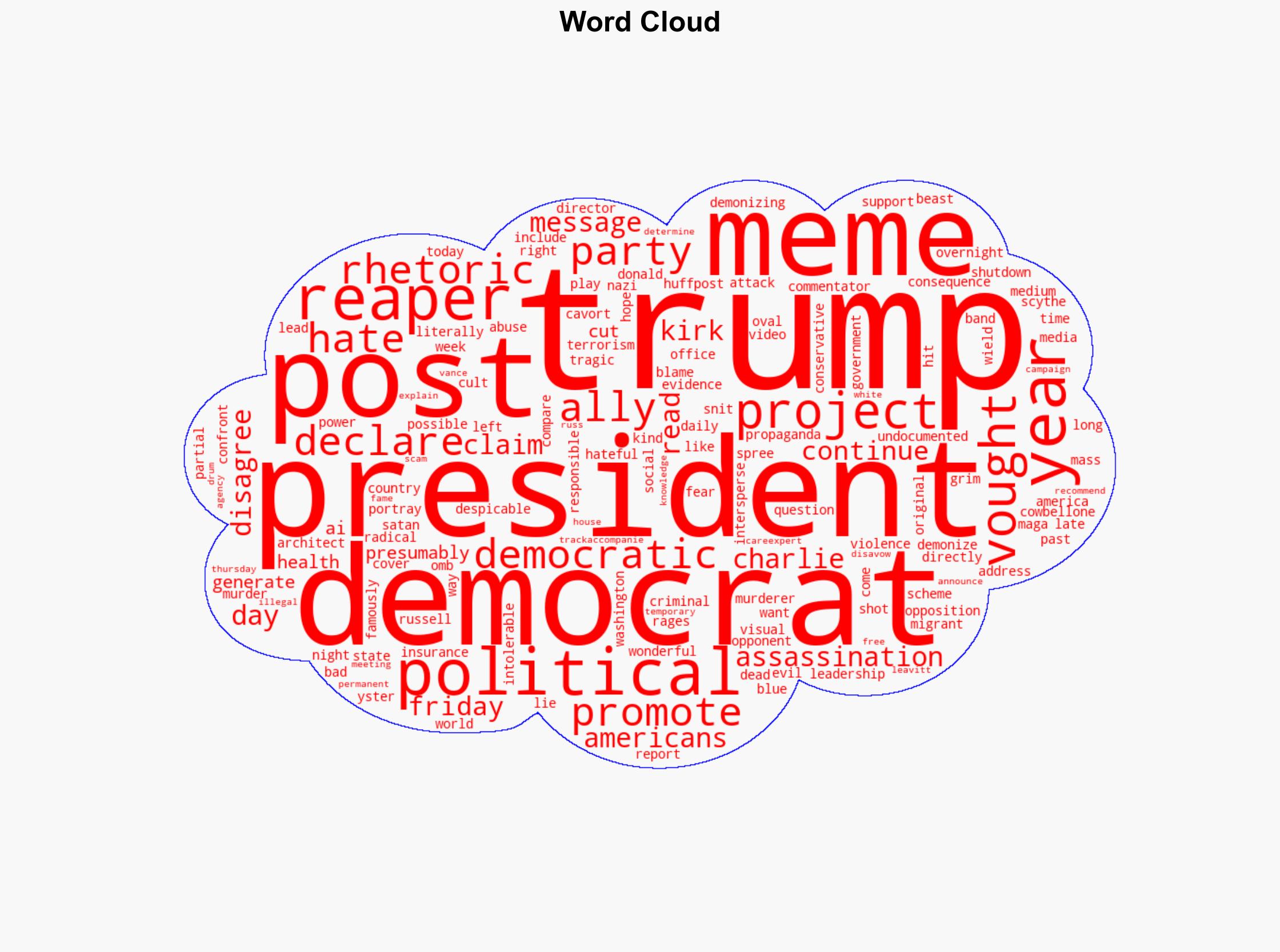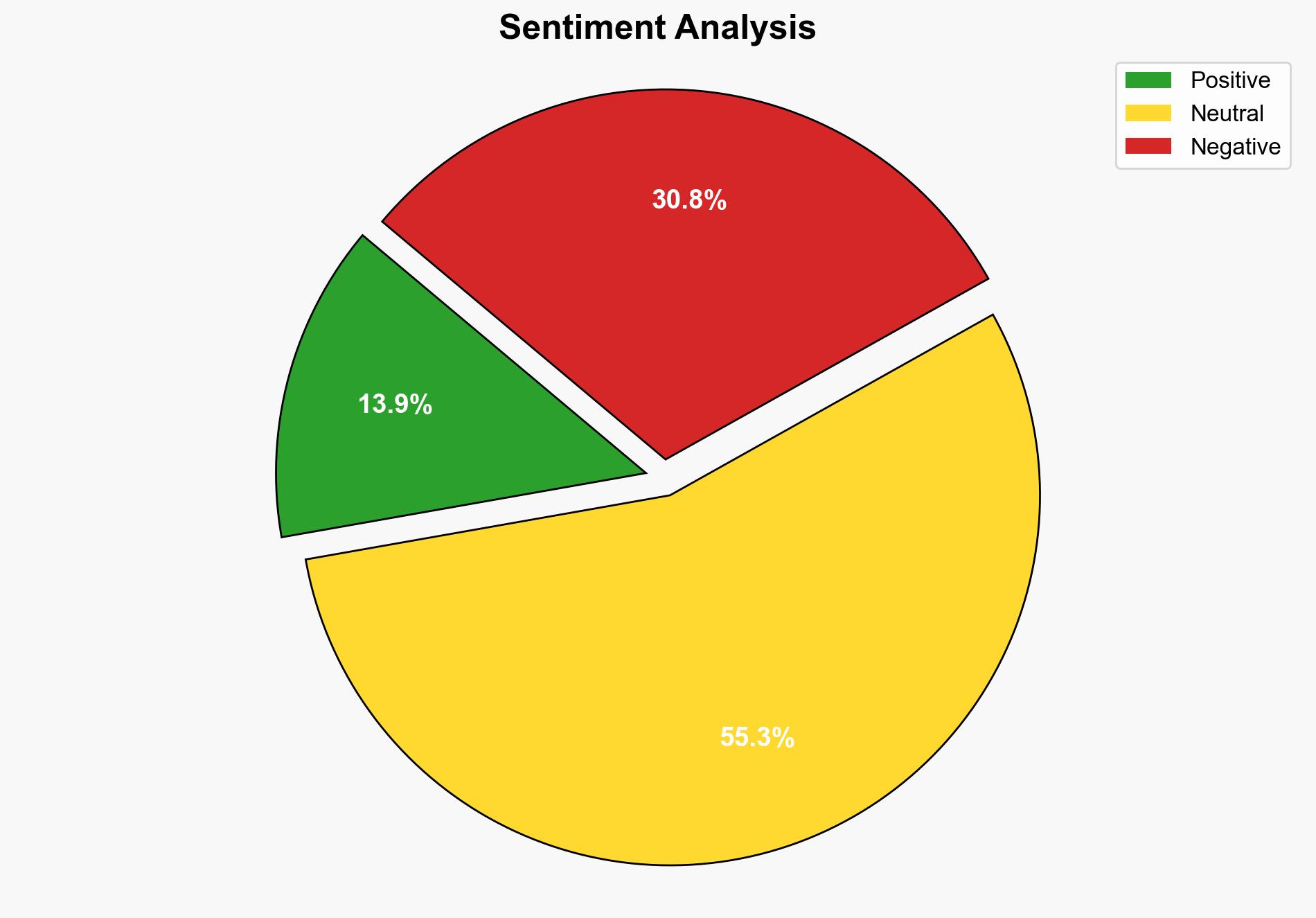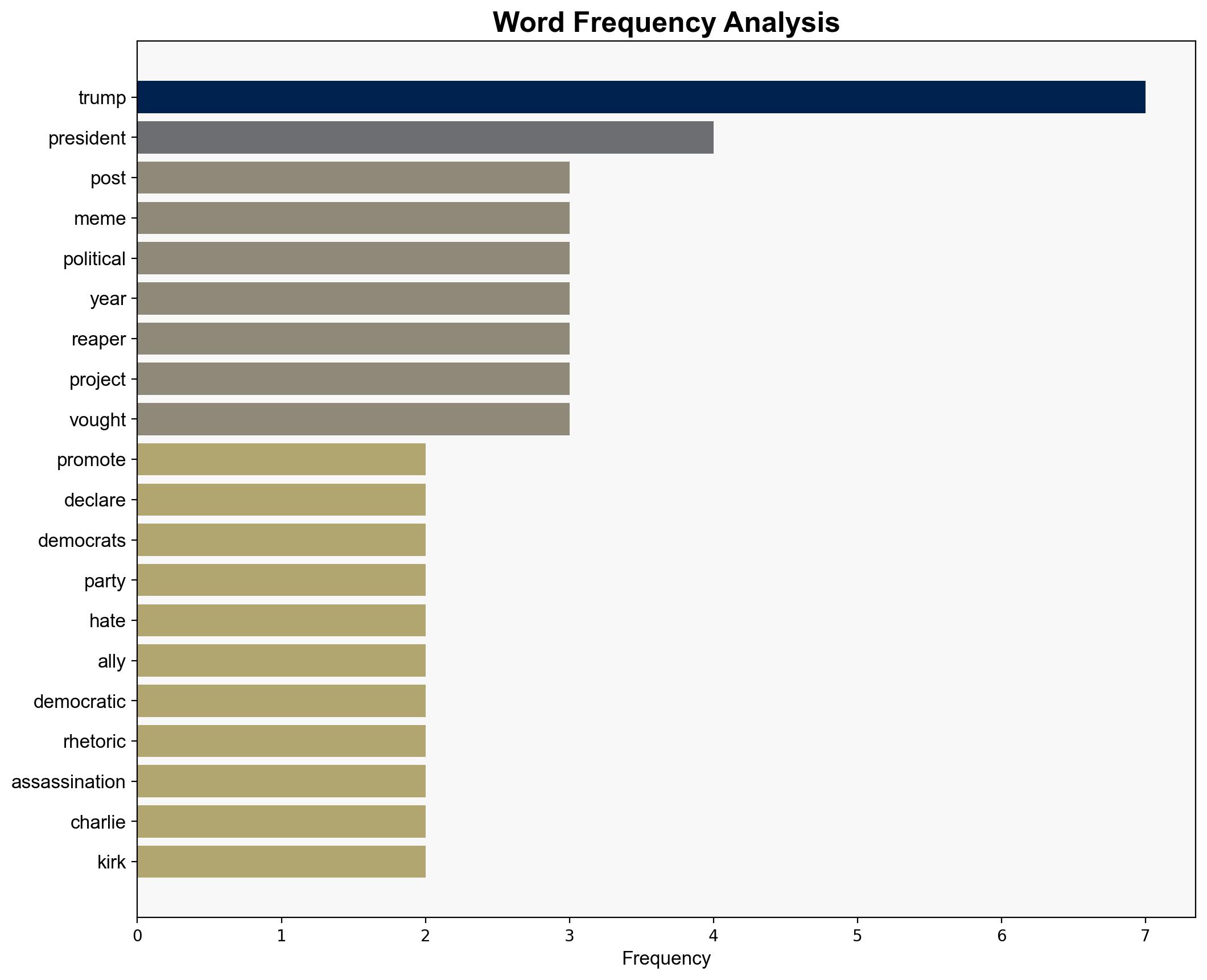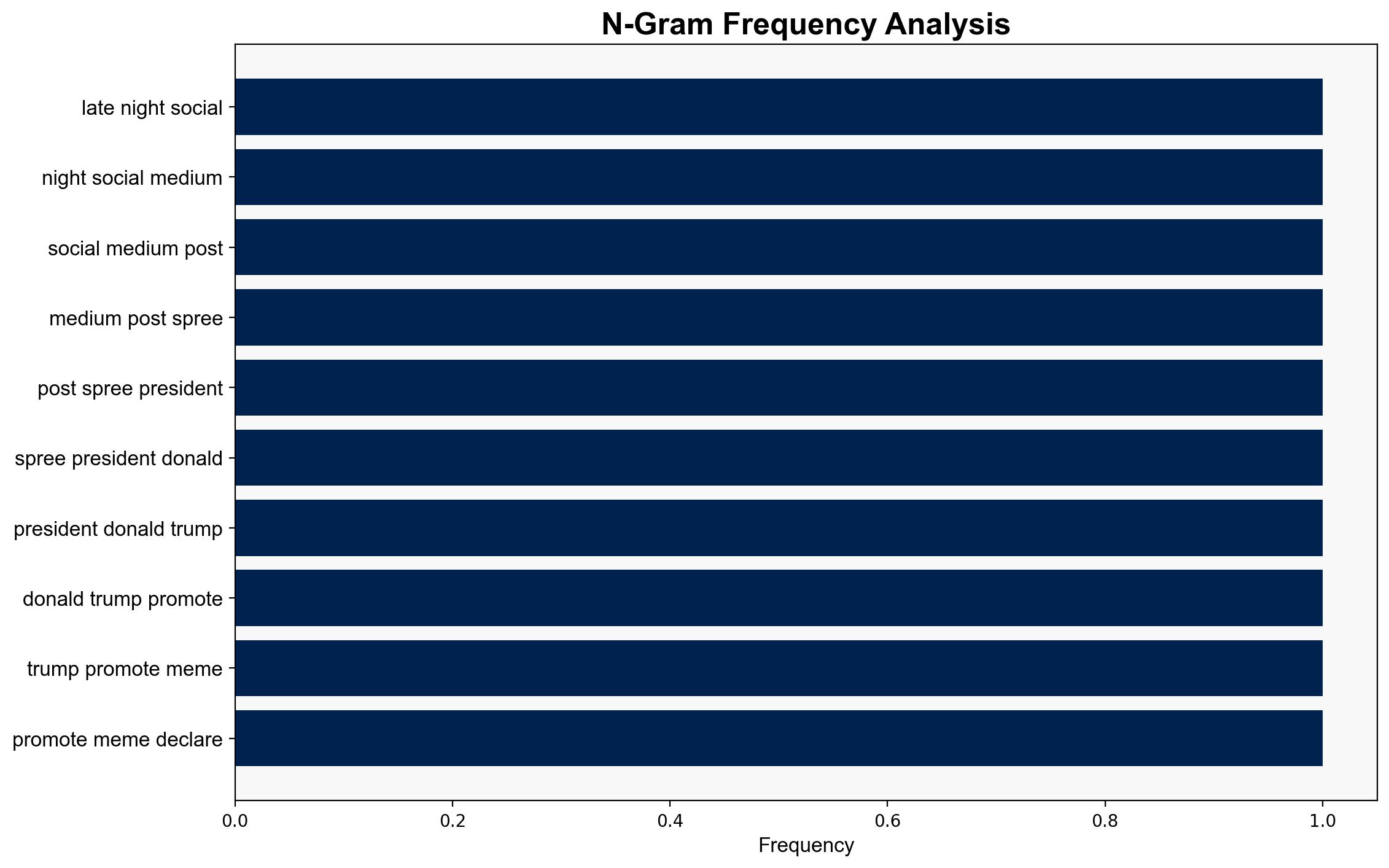Party of Satan Trump uncorks bizarre rant weeks after Kirk rhetoric blame game – Raw Story
Published on: 2025-10-03
Intelligence Report: Party of Satan Trump uncorks bizarre rant weeks after Kirk rhetoric blame game – Raw Story
1. BLUF (Bottom Line Up Front)
The most supported hypothesis is that Donald Trump’s recent social media activity is a strategic attempt to galvanize his base by framing political opposition as a moral threat. Confidence level: Moderate. Recommended action includes monitoring for potential escalation in rhetoric and its impact on public sentiment and political stability.
2. Competing Hypotheses
1. **Hypothesis A**: Trump’s social media outburst is a calculated move to energize his political base by portraying Democrats as morally corrupt and dangerous, thus consolidating support among his followers.
2. **Hypothesis B**: The outburst is a reactionary and impulsive response to recent political pressures and criticisms, lacking a coherent strategic objective.
Using the Analysis of Competing Hypotheses (ACH) 2.0, Hypothesis A is better supported by the pattern of Trump’s historical use of provocative rhetoric to rally his base. Hypothesis B is less supported due to the consistent strategic pattern observed in similar past behaviors.
3. Key Assumptions and Red Flags
– **Assumptions**: Hypothesis A assumes Trump’s actions are strategically motivated rather than impulsive. Hypothesis B assumes a lack of strategic foresight in Trump’s communications.
– **Red Flags**: The lack of direct evidence linking Democratic rhetoric to violence raises questions about the validity of the claims. The use of AI-generated content could indicate an attempt to manipulate public perception.
– **Blind Spots**: The analysis may overlook internal political dynamics within Trump’s circle that could influence his public statements.
4. Implications and Strategic Risks
– **Patterns**: The rhetoric could further polarize the political landscape, increasing the risk of civil unrest.
– **Cascading Threats**: Escalation in rhetoric may lead to increased threats against political figures and institutions.
– **Potential Escalation**: The use of AI-generated content for political messaging might set a precedent for future disinformation campaigns.
– **Dimensions**: Psychological impact on public sentiment could destabilize political discourse and influence voter behavior.
5. Recommendations and Outlook
- Monitor social media platforms for shifts in public sentiment and potential calls for violence.
- Engage in dialogue with tech companies to address the use of AI-generated content in political messaging.
- Scenario Projections:
- Best Case: Rhetoric de-escalates, leading to a more stable political environment.
- Worst Case: Increased polarization results in civil unrest and threats to national security.
- Most Likely: Continued rhetorical escalation with sporadic incidents of unrest.
6. Key Individuals and Entities
– Donald Trump
– Charlie Kirk
– Russell Vought
7. Thematic Tags
national security threats, cybersecurity, counter-terrorism, regional focus




